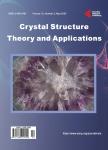Docking of Human Heat Shock Protein 90 with Selenoderivatives of Geldanamycin
Docking of Human Heat Shock Protein 90 with Selenoderivatives of Geldanamycin作者机构:Department of Chemistry University of Kinshasa Kinshasa Democratic Republic of Congo The Cambridge Crystallographic Data Centre Cambridge UK
出 版 物:《Crystal Structure Theory and Applications》 (晶体结构理论与应用(英文))
年 卷 期:2019年第8卷第2期
页 面:13-27页
学科分类:1002[医学-临床医学] 100214[医学-肿瘤学] 10[医学]
主 题:1YET Geldanamycin Selenoderivatives Cambridge Structural Database Binding Energy Molecular Electrostatic Potential (MEP)
摘 要:The interference of human heat shock protein 90 (HSP90) in many signalling networks associated with cancer progression makes it an important drug target. In the present work, we investigated the binding ability of 9 selenoderivatives of geldanamycin (GMDSe) at the N-terminal domain of HSP90 derived from Protein Data Bank (PDB code: 1YET) based on ligand-protein docking. All selenoderivatives interacted positively with HSP90, yet the binding strength decreased when replacing monovalent oxygen in position 1 (GMDSe1) or 9 (GMDSe9). Hydrogen-bonding and lipophilic interactions between selenoderivatives and amino acid residues in the inhibitor site of HSP90 were thermodynamically the main forces driving the binding stability. Molecular electrostatic potential surfaces of the selenoderivatives showed marked non polar areas, which were probably involved in the lipophilic interactions with the hydrophobic residues of amino acids. Interestingly, the amino acid residues forming the hydrogen bonds with GMD were also involved in the hydrogen-bonding interactions with the selenoderivatives. Moreover, HSP90 interacted with the GMDSe6 and GMDSe7 selenoderivatives stronger than with GMD, while maintaining lipophilic interactions and hydrogen bonds with amino acid residues like Asp93, which are catalytically crucial for therapeutic properties of HSP90 inhibitors. This finding should guide further studies of pharmacophore properties of GMD selenoderivatives in order to explore their therapeutic properties. It is noteworthy that selenium has been suggested to reduce the risk of various types of cancers.



